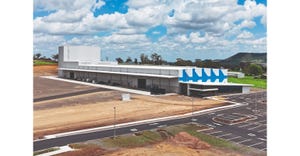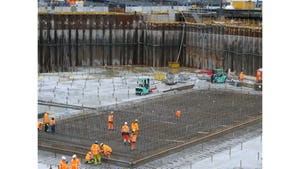Using a Cyclonic Dust Collector as a Filter Pre-Treatment
August 18, 2010
 Bart Eggert, Aerodyne
Bart Eggert, Aerodyne
[email protected]
At one time mechanical dust collectors were the industry standard in dust collection and air pollution control. However, with an ever-increasing focus on air quality, EPA regulations regarding dust collection have steered the manufacturing world toward the higher efficiency capabilities of bag houses, cartridge filters, and other dust collection equipment utilizing filter media. This change has undoubtedly helped to reduce the amount of harmful emissions released into the atmosphere in manufacturing processes. Unfortunately, the use of these fabric filter collectors is not without cost. The limitations of filter media such as moisture, heat, and high particulate volumes have added to the challenges of successful dust collection. Additionally, the high cost of bag or cartridge replacement, maintenance issues, and expensive pulse-jet controls to clean filter media can add up. The solution to these headaches for many has been the use of mechanical dust collectors before final-stage filtration.
Mechanical dust collectors use a cyclonic air flow to separate particulate from an air stream. The centrifugal force created by the rotary flow throws the dust out of the air stream and toward the walls of the collector. In a typical cyclone, the particulate strikes the wall of the collector and falls to a hopper below for collection. Cleaned air is then vented through the top of the collector. While this form of collection can be highly efficient in dealing with large, dense particulate, extremely fine dust lacks the inertia to escape the air stream and is subsequently carried out with the cleaned air. Some high-efficiency cyclones use two air streams, sometimes called “counter cyclonic action,” to more efficiently separate the dust. The powerful secondary air stream intercepts the particulate before it contacts the side wall, reducing wear when handling abrasive materials. This secondary air stream also helps to sustain the cyclonic action inside the collector, thereby increasing its efficiency.
Filter media dust collectors such as bag houses and cartridge filters use a fine filter media to remove dust from an air stream. The dust-laden air is drawn into the collector where it passes through the filter media and particulate is intercepted. Dust builds up on the filter until it is cleaned or replaced. Cleaned air is then vented out of the collector.
Many manufacturing processes involve circumstances that make it difficult to rely completely on a bag house. Heavy dust loading can be a maintenance nightmare for a filter media collector. Recently a rock crushing operation based out of Minnesota realized the benefits of placing a cyclonic dust collector before its bag house. The enormous amount of rock dust generated in the crushing operation was blinding the bags and causing frequent shutdowns. The decision was made to install a cyclonic dust collector to receive the dust before being sent through the bag house. The cyclone captured the vast majority of the rock dust, leaving only a small amount of fine particulate for the bag house to handle. The cost of the additional equipment was quickly recovered through fewer shutdowns and less frequent bag replacement.
Processes involving high-temperature exhaust gas also plague filter media collectors. The hot air temperatures exhausted from foundries, glass-making plants, and power plants can burn the filter media used by most bag houses. While high-temperature filter bags and cartridge filters are available, they can be an expensive addition and are still not completely immune to the heat. Used as a spark arrestor, a cyclonic dust collector can be placed before a bag house to both reduce the temperature of the air stream and the particulate loading before it enters a final stage filter.
While a mechanical dust collector may not be necessary in every application, the benefits that can be gained from this proven technology are evident. As emission standards become more stringent and process costs continue to rise, any advantage that can be taken should be considered. By comparing process costs such as materials, labor, and downtime with the expense of a cyclone, a decision can be made as to the need for such equipment.
Bart Eggert is product manager for Aerodyne (Chagrin Falls, OH), a division of Abanaki Corp.
You May Also Like


